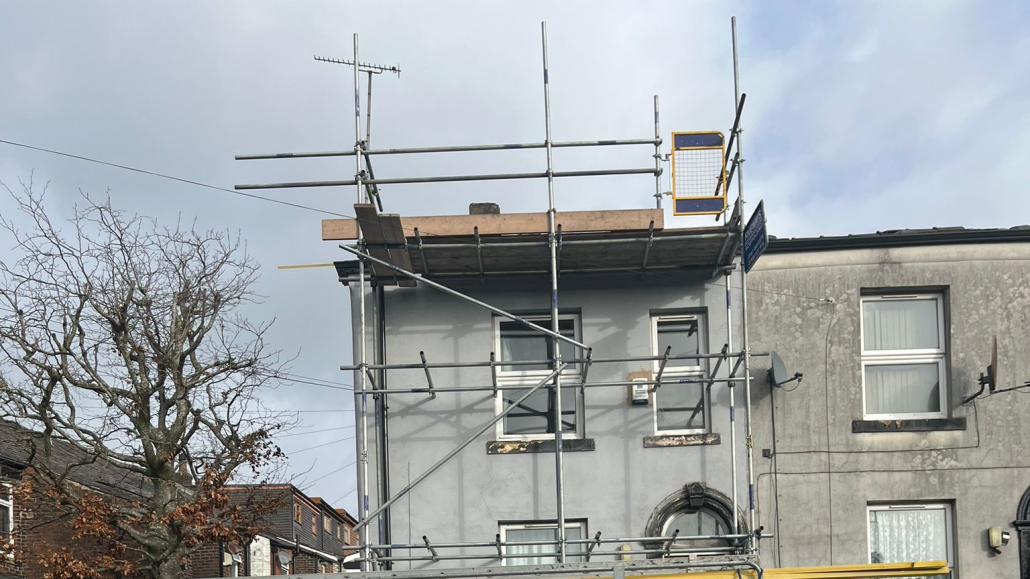EPDM roofing has become the prominent flat roofing option, highly preferred for both residential and commercial properties. It comes with several benefits for property owners, including enduring affordability, durability, and flexibility, making it a lucrative option. However, deriving the comprehensive benefits of EPDM involves a professional-grade installation. Neglecting critical steps or using inappropriate materials would lead to multiple issues in the future, which can prove expensive and time-consuming to fix.
EPDM Roofing Installation Mistakes to Avoid
Overlooking the importance of the right level of installation tactics will reduce the overall lifespan of the roof as it exposes the building to considerable water leaks, damage to the insulation, and unwanted repair costs in the future. Let’s now explore common EPDM roofing mistakes to avoid and how professional roofers can help.
Skipping the Surface Preparation
Installing an EPDM roof on your property over an uneven or dirty surface is a common mistake that property owners often make. Oil, dust, debris, and moisture possibly interfere with the adhesive bonds. A few roofing contractors would rush through this step to save time, but doing so would negatively impact the structure’s integrity. It is essential to clean, dry, and smooth the roofing deck to ensure that the EPDM membranes adhere properly and perform optimally over time. The EPDM roofing contractors are backed by years of roofing experience and ensure to follow the preparation phase from scratch. This is a crucial step that differentiates a strong EPDM roofing system from one that fails prematurely.
Incorrect Adhesive Application
Applying too much or too little adhesive leads to severe issues. Whenever the adhesive is applied improperly or spread inconsistently, wrinkles or bubbles start to appear after the membrane is laid. It creates pockets where moisture starts to accumulate, leading to considerable leaks in the future. The experienced local roofers know that uniform adhesive coverage and open time, which is the time the adhesive needs to dry before membrane application, are extremely important. Several new roof installation issues arise from the improper adhesive used during the EPDM projects, which could have been avoided by following fundamental practices.
Neglecting Proper Seaming Techniques
The seams form one of the highest-risk points in the EPDM System. Failing to prime the seams appropriately or applying the seam tapes with proper pressure would lead to failing seams. A few DIY attempts overlook the importance of rolling the seams tightly using a silicone roller, which can lead to water infiltration. Professional flat roofing contractors understand that sealed or strong seams form the backbone of a longer-lasting EPDM roof. Improper seam work is often the mistaken consideration behind membrane failure, which is one of the most avoidable EPDM roofing mistakes.

Overstretching the Membrane
EPDM membrane undergoes damage through overstretching that happens whenever installers try to stretch it beyond its intended size range. The physical strength of this material decreases, making it more prone to splitting incidentally due to temperature changes. Installation of EPDM roofing requires sufficient tour of slack as the material needs space for expansion and contraction. The practice of letting the membrane relax before securing it forms a step that inexperienced installers fail to execute properly. Bring the EPDM roof material past its stretch limit, and it becomes more brittle than signs of failed felt roofing material, despite EPDM being designed to flex like a rubber membrane.
Improper Flashing Installation
A correct installation of flashings around vents and chimneys, and HVAC units protects against leaks. There are instances where roofing contractors do not properly integrate flashing into the membrane, creating interface vulnerabilities. Uncorrect materials applied with flimsy flashings enable moisture infiltration into building structures. A team of professional local roofers possesses the knowledge needed to secure flashing junctions and identify the signs of chimney repair. An accurate membrane installation process protects the membrane against future deterioration, even with top-quality materials.
Installing EPDM Roofing in the Wrong Weather Conditions
The damp, cool, and overly humid conditions often interfere with the adhesive’s ability to cure. A few of the installations are rushed during poor weather conditions to meet project deadlines. This leads to a poor bond between the roofing membrane and the deck. Awaiting the right weather conditions helps to ensure that the EPDM roofing system adheres appropriately and stays watertight. The experts understand the schedule installations around the weather forecast to avoid issues. Any rushed jobs would lead to early signs of damage, offering EPDM an unfair comparison to failing or ageing felt roofs.
Poor Drainage Design
Flat roofs need proper drainage devices to prevent water accumulation. Drain placement and slope must be properly adjusted to prevent water pooling, which accelerates membrane breakdown and promotes algae growth. The selection and execution of drainage plans fall under the responsibility of professional roofing contractors during the implementation of an EPDM roofing plan to direct water from the roof. A properly installed membrane eventually breaks down when water remains in contact with it each day.
Not Hiring Qualified Roofing Contractors
A low-cost labour selection or undertaking DIY installation projects typically results in substantial future expenses. The installation of EPDM roofing may seem basic, but it requires specialised skills and detailed attention because it is a technical system. People who rely on experienced EPDM system experts from reputable local roofing companies can achieve a proper first-time installation, which helps eliminate future repair costs. Inexpensive work and amateurish installation practices drive future expenses, as they often require premature roof fixes or a new roof replacement.
Conclusion
EPDM roofing is a smart property investment only when it is installed correctly by experienced professionals. Avoiding these common mistakes properly will lead to a maximum lifespan, along with the best efficiency and performance of your roofing system. Businesses and homeowners seeking professional EPDM system installation can rely on High Grade Roofing as their top choice. We offer the ideal EPDM roofing solutions for property owners to experience a durable solution. Contact us today for a no-cost roofing survey!
Frequently Asked Questions
How Long Does an EPDM Roofing System Typically Last with Proper Installation?
EPDM roofing can last 25 to 30 years when installed correctly and maintained regularly. Its weather resistance and durability make it one of the best options for long-term roofing solutions.
Does EPDM Roofing Work Well in Extreme Weather Conditions?
Yes, EPDM performs well in both hot and cold climates due to its flexibility and resistance to UV rays. Proper installation enhances its ability to withstand harsh environmental changes year-round.
Is EPDM Suitable for Both Commercial and Residential Buildings?
Absolutely. EPDM roofing is commonly used for flat or low-slope residential homes and commercial properties due to its reliability, affordability, and ease of repair when needed. Contact us to speak with our EPDM specialists today.





